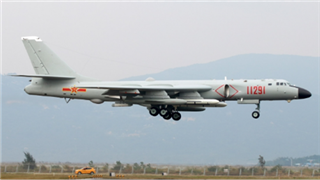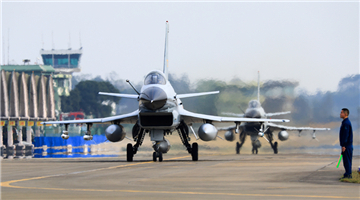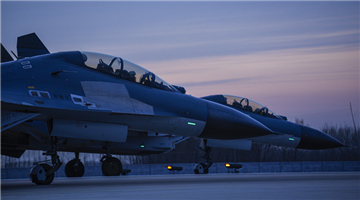
By Xue Yanxing, Pu Zhenxing and Yao Xiaokai
The Iranian military carried out the first large-scale UAV exercise in Semnan province on January 5, reported Iran's Fars news agency. During this two-day exercise, hundreds of drones from Iran's army, navy, air force and air defense troops conducted joint operations on a number of subjects, including surveillance, reconnaissance and electronic fight.
At a sensitive moment of US continuous military pressure on Iran and the first anniversary of the assassination of senior Iranian commander Suleimani by US drones, such a massive drone exercise sent several signals.
The real-combat exercise showcases Iran's asymmetrical assault ability.
In this drill, various services and arms exercised a string of subjects, including launching air-to-air missiles from drones to intercept and destroy air targets, using bombs and precision-guided missiles to detonate ground targets, and using long-range UAVs to hit pre-set targets.
The exercise showcased Iran's advanced drone technology, tried out relevant drone tactics, and tested the drone's fighting capability in real combats.
The Iranian military also exercised the AI-based UAV fleet flight and UAV swarm attack. Previously, Iranian military experts envisioned the scenario of conflicts between Iran and the US, in which Iran could dispatch lots of drones and speedboats to attack an American aircraft carrier strike group via the "swarm tactic" or "wolf pack tactic", sending it to the bottom of the sea through asymmetrical attacks.
Full-spectrum exhibition in response to sanctions by the US
The drones showcased in this military exercise are of full types (short, middle, and long ranges), large quantities and wide-ranging purposes (reconnaissance and surveillance, communication relay, electronic warfare, fire attack, etc.). Most of them are exhibited for the first time, fully demonstrating the Iranian military's mature UAV technology and powerful UAV combat capability. "Iran has become one of the countries with powerful drones," said the exercise spokesperson.
In fact, Iran's advantage in drones is primarily attributed to the US. On the one hand, the waves of sanctions imposed by Washington have dragged Iran's weapon and equipment development. Knowing that it is far weaker than the superpower, Tehran has continuously strengthened the research and development of advanced drones in recent years to enhance its ability to launch asymmetrical assaults.
On the other hand, Iran and its allies have captured and hit down American drones multiple times. It is generally believed that Iran's home-made drones have a strong resemblance to their American counterparts, and it's highly possible that Iran has made breakthroughs in this field by tearing down American UAVs and drawing on relevant technologies.
Announcement of attitude against the US to appease public opinions at home
The US has taken constant moves recently to keep imposing pressure on Iran. On December 10, 2020, two American B-52 bombers flew 2 hours near Iran's territorial airspace; on December 21, US Navy's USS Georgia nuclear submarine and two cruisers crossed the Strait of Hormuz into the Persian Gulf; on December 30, two B-52 bombers that can carry nuclear weapons of the US Air Force flew to the Middle East.
On January 3, one year after senior Iranian commander Suleimani was assassinated, the US suddenly announced that the Nimitz Carrier Strike Group scheduled to return to the US would stay in Middle East waters and the country would continue to send more troops to the region. The constant provocations provoked strong resentment among the Iranians.
The massive drone exercise by Iran was partly to pay homage to Suleimani and partly to put up a tough stance against the US to vent the Iranians' rising anti-America sentiments and mitigate public opinion pressure at home.
Offensive-defensive stance increases bargaining chips against the US
Mohamed Hussein, a senior Iranian military officer, said at the beginning of the exercise that the UAV exercise is aimed to demonstrate the country's ability to maintain regional peace and security without the presence or interference of foreign forces.
The exercise was sending a warning to the US military to not take any rash action as Teheran, with its own drones, is totally capable of detecting, tracking, positioning and attacking US naval fleets deployed at the Persian Gulf.
According to analysts, Iran's latest UAV exercise and its earlier seizure of the ROK vessel, as well as the restart of nuclear activities, for all their tough appearance, are aimed at holding more bargaining chips in hand against the US. After all, the president-elect Joe Biden, the leading figure behind the Iranian nuclear deal, had previously said he was ready to get back to the agreement and end the sanctions on Iran imposed by the Trump administration.
The moves taken by Iran before the transition of power at the White House are less to flame up a direct confrontation with the US than to express its discontent with the incumbent administration. At the end of the day, what Iran wants most is the ease of bilateral relations after Biden takes office.











